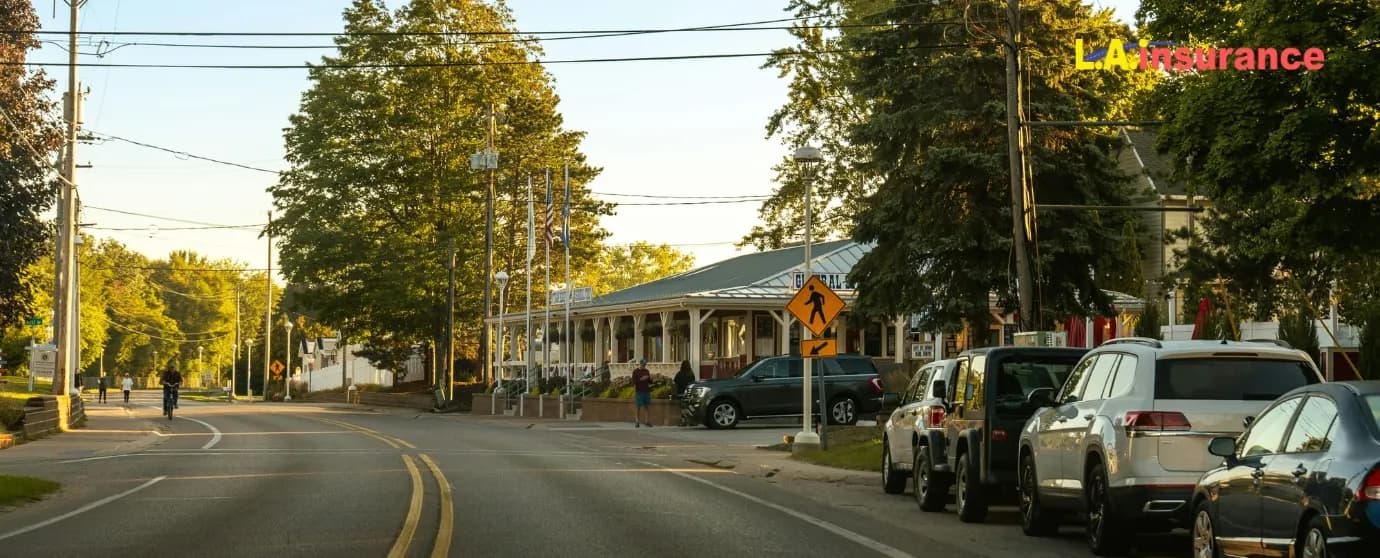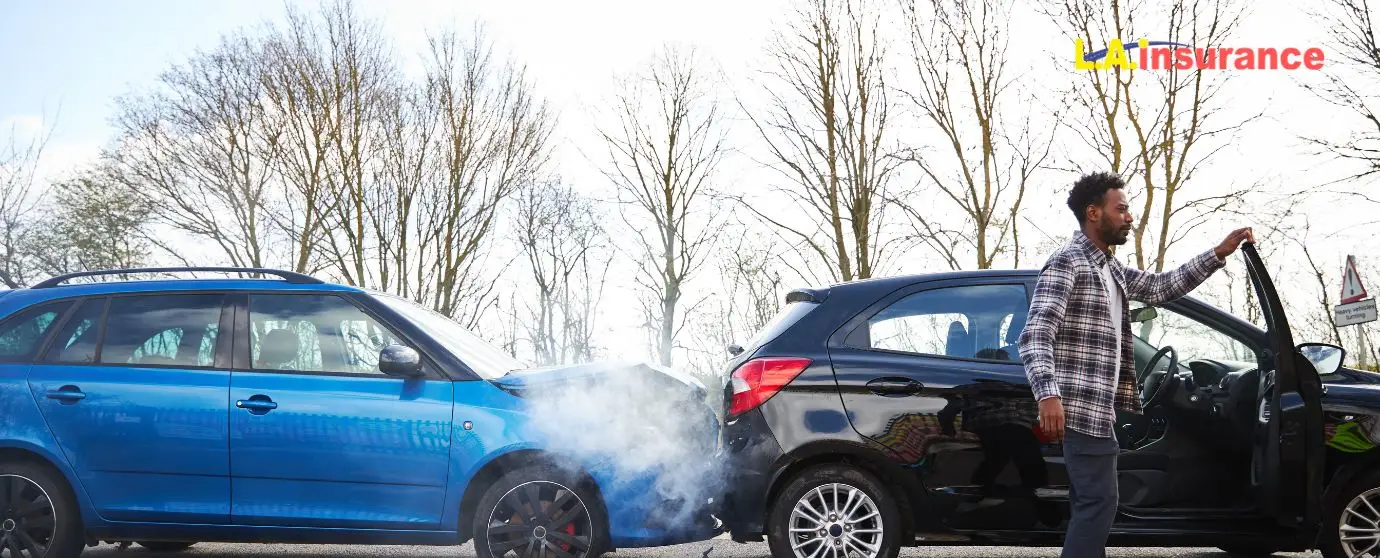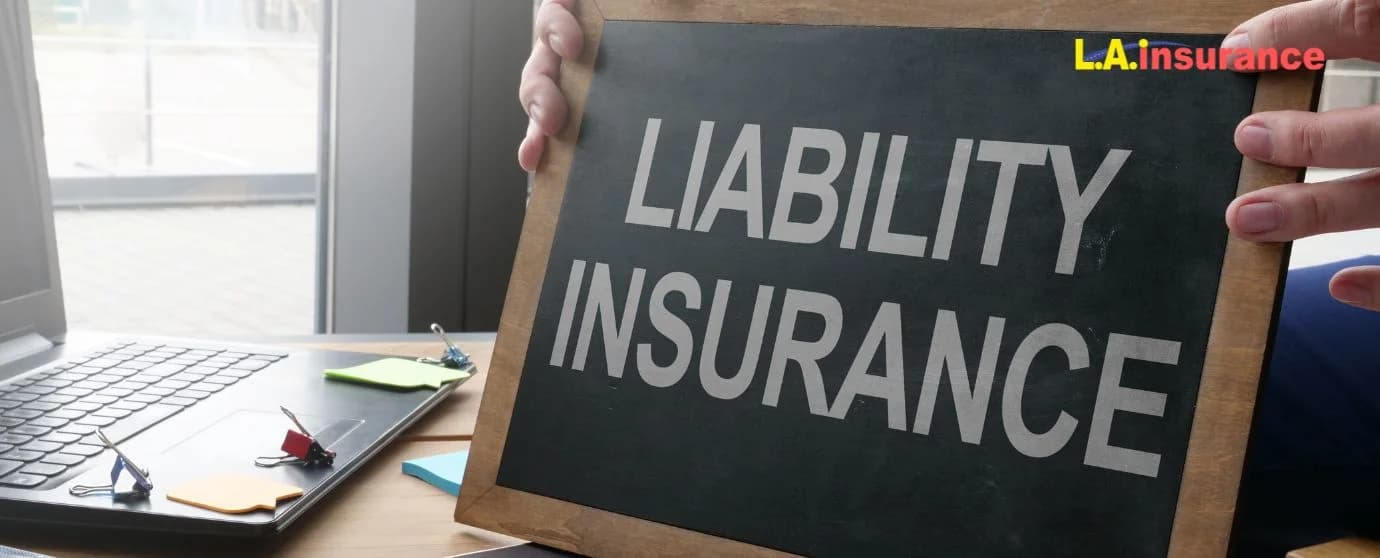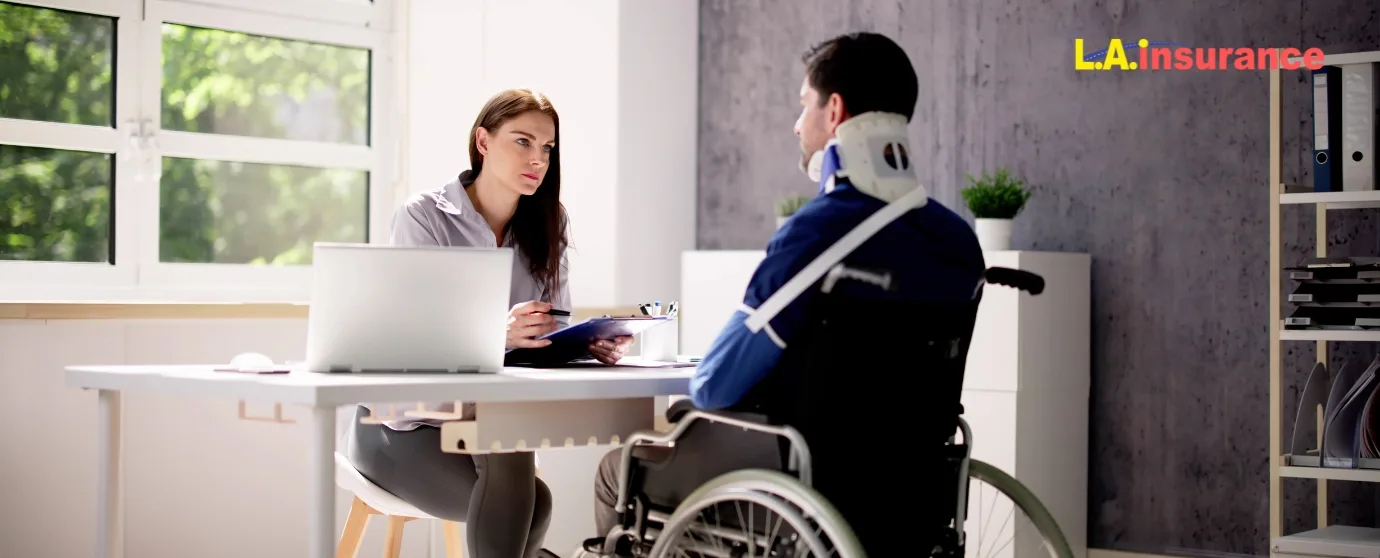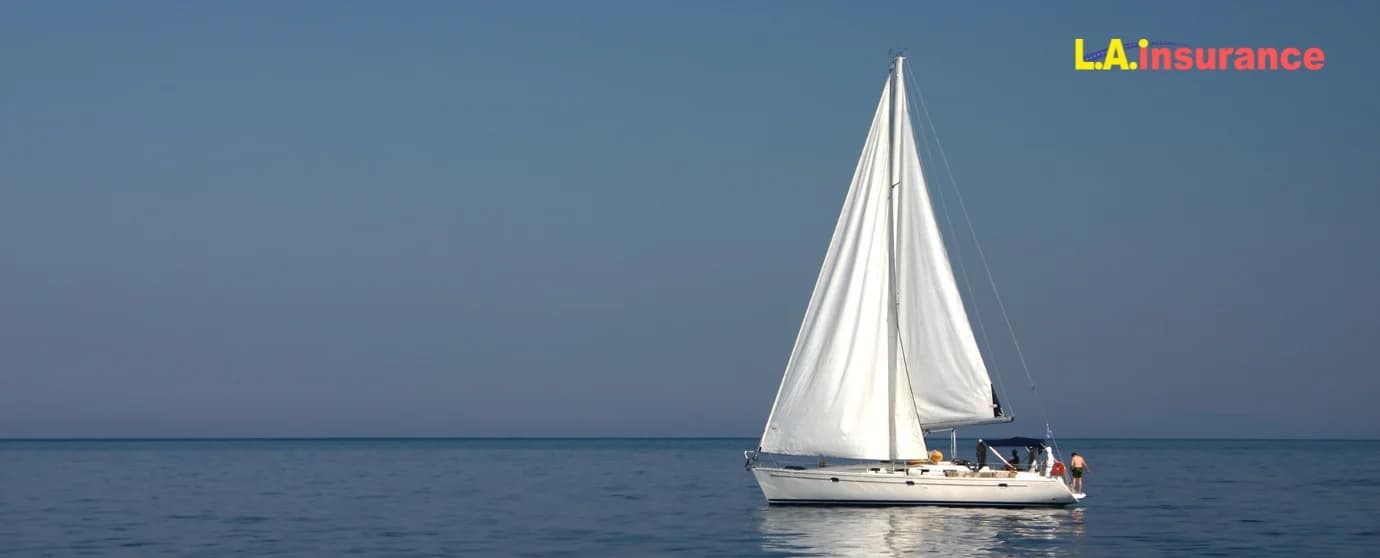
Publish Date: 08-04-2025
Auto Insurance
Last Updated: 21-04-2025
Does Car Insurance Cover Water Damage from Rain or Flood
Water damage is a growing concern for car owners, especially in regions prone to heavy rain, flooding, or hurricanes. In fact, floods cause billions in damage annually across the U.S., affecting states like Florida, Texas, and Louisiana the most. If your car suffers water damage, you might wonder: does car insurance cover water damage from rain or flood?
The answer largely depends on whether you have comprehensive coverage. This optional policy protects against non-collision damage, including water damage from rainstorms or floods.
In this article, we’ll cover:
- What are water damage vehicles and an insurance policy that covers it
- Filing claims and potential rate increases
- Preventative tips for protecting your vehicle.
- Special considerations like gap insurance or high-risk area upgrades.
What Is Water Damage Coverage in Terms of Car Insurance?
Water damage in car insurance refers to harm caused by rain, flooding, or other water-related natural disasters. This can include damage to your car’s engine, electrical system, or interior. For example, flooding from a severe storm can destroy your car’s components and make it undrivable.
CARFAX states that floodwater can affect your car’s four main parts:
- Mechanical: Corroding metal, exhaust system failure, engine seizure or overheating, transmission failure.
- Electrical: Short circuit wires, computer malfunction, inoperative lights/dashboards
- Safety: Wrapped/rusted brakes and rotors, ABS malfunction, airbag/restraint system failure
- Health: Interior contamination, muddy seats/fabric, bacteria in the ventilation system.
Signs of Flood Damaged-Vehicles
However, it can be difficult for you to identify flood-damaged cars. Here are key indicators to look for:
- Musty or Moldy Odors: A persistent smell of mildew in the car, particularly from vents, indicates prolonged water exposure. Strong air fresheners may be used to mask this odor.
- Discolored Upholstery and Carpets: Look for mismatched, stained, or new carpets in an otherwise older car. Feel moisture under carpets and in hard-to-reach places like the trunk or beneath the seats.
- Rust or Corrosions: Check metal parts like door hinges, springs, and screws for rust. Inspect under the dashboard and along the undercarriage for corrosion or flaking metal.
- Waterlines or Dirt Residue: Visible watermarks or mud deposits in areas like door seals, headlights, or the engine compartment are strong signs of water intrusion.
- Unusual Noise or Electrical Issues: Infotainment systems, headlights, or air conditioning malfunction could stem from water-damaged electrical components.
- Brittle or Damage Wiring: Inspect wires under the dashboard; water-damaged wires often become stiff or brittle.
- Foggy Lights or Mirrors: Moisture trapped inside headlights, taillights, or instrument panels can indicate flood exposure.
- Contaminated Fluids: Check the engine oil or transmission fluid for a milky appearance, which indicates water contamination.
Types of Water Damage Covered by Car Insurance
Flooding is one of the most common causes of water damage. Whether caused by heavy rain or storm surges, it can destroy your vehicle’s transmission, engine, and interior. For example, vehicles submerged in flood can cause serious issues, and you expect to pay around $12,000 for repair bills (Via SellMax, 2).
Besides, sudden rainstorms can lead to leaks through improperly sealed windows, doors, or sunroofs. Damage from a single event, like a torrential downpour, is usually covered. However, gradual leaks from poor maintenance typically aren’t.
Hailstones can also break windows and allow rain to enter your car. Comprehensive covers both the hail damage and resulting water damage.
Related Article: Does Car Insurance Cover Hail Damage?
Does Car Insurance Cover Water Damage from Rain or Flood?
Does insurance cover water-damaged cars? Yes, car insurance can cover water damage, but only if you have comprehensive coverage. This optional policy protects against non-collision events like flooding, heavy rain, and storm damage. Without comprehensive insurance, you’d be responsible for all repair costs out of pocket.
Although comprehensive insurance protects you against issues like engine failure or interior damage caused by rising water, not everything in your vehicle is covered. For instance, owner-installed electronics are typically excluded, even with a comprehensive policy. This includes:
- Stereo systems, tape decks, and CD players
- Scanners and two-way mobile radios
- GPS devices, computers, televisions, or gaming systems
- Any electronic devices not installed by the car manufacturer
You should also note that standard liability or collision insurance does not include water damage coverage. However, collision coverage can help you if you live in an area that is prone to heavy rainfall and flooding.
Read about different types of auto insurance coverage to learn what they cover and what they don’t.
Why Do You Need Collision Coverage in Flood-Prone and Rainy Areas?
Rain and floods aren’t just inconvenient, they’re dangerous. According to the Federal Highway Administration (FHWA):
- Rain and wet pavement are responsible for 75% of all weather-related crashes annually and 47% occur during rainfall.
- Each year, over 3,400 deaths and 357,300 injuries occur during rainfall.
- Wet pavement alone accounts for nearly 5,700 fatalities and over 544,700 injuries annually.
Rain reduces vehicle traction, visibility, and maneuverability. This causes speed reductions of 10–25% on arterial roads and up to 17% on freeways during heavy rain (Via FHWA). Flooding is even more hazardous, often closing roadways and causing fatalities during hurricanes or tropical storms.
Given these risks, to be on the safe side, both comprehensive and collision insurance are important. Comprehensive coverage protects against weather-related damages. On the other hand, collision insurance covers damages from accidents, including those caused by wet or slippery roads. If you’re living in a flood-prone state like Florida, or Texas, we’d recommend getting our affordable full coverage auto insurance as this policy includes liability, collision, and comprehensive coverage.
States and Cities Most Vulnerable to Flood Damage Cars
You might be wondering which cities are the most vulnerable to flood-damaged cars. According to CARFAX, the following are the top 10 cities with flooded cars in 2024:
City | Number of Flooded Cars |
Houston | 29,000 |
New York | 23,300 |
Miami | 23,200 |
Philadelphia | 17,000 |
Lexington | 13,400 |
Dallas | 12,800 |
Fort Myers | 11,000 |
Chicago | 10,600 |
Tampa | 8,700 |
Orlando | 8,500 |
Plus, as of the end of 2023, CARFAX data shows that the following top 10 states have the most water-damaged cars:
Texas | 64,000 |
Florida | 62,700 |
Kentucky | 30,200 |
Pennsylvania | 21,800 |
California | 20,200 |
New Jersey | 15,600 |
New York | 15,300 |
Illinois | 14,500 |
N. Carolina | 14,300 |
Mississippi | 12,000 |
If you’re living in one of these states or cities, always take proper precautions. After this winter ends, heavy spring and monsoon rains can wash up your cars and cause internal damage. For any unexpected flood damage, you may have to pay huge amounts of repair bills, and if unfortunate, your car might be considered a total loss. According to CARFAX, 454,000 flooded cars are back on the road, especially in areas that often face flooding. These cars have likely undergone extensive repairs, which can be costly. For this reason, we advise you to insure your car with a full coverage policy. This type of insurance can help protect you financially and cover repair costs.
Will Insurance Cover Damage from Driving Through Flooded Streets?
Driving through flooded streets is risky and can cause significant damage to your car. However, if you have comprehensive insurance, your policy typically covers damage caused by driving through water. This includes harm to the engine, transmission, or electrical system. For example, if water enters your engine and causes it to fail, your insurance may pay for repairs or even declare your vehicle a total loss if the damage is severe.
Besides, there are many risks of driving through flooded streets, and most of them are associated with its unpredictability. They can hide debris, potholes, or even sinkholes. Also, driving through standing water can lead to hydrostatic lock, a condition where water enters the engine and damages its internal components.
Flood can also cause long-term issues like rust, mold, or damage to the vehicle’s electrical system. If you don’t have comprehensive insurance, you’re the one who needs to pay for the repair expenses.
A Few Tips to Avoid Damage:
- Avoid driving through water deeper than a few inches.
- If caught in a flood, park your vehicle on higher ground.
- Do not attempt to start a submerged car, as it can worsen the damage.
How Do I File a Claim for Water-Damaged Cars?
If you experience a flood or heavy rainfall that causes damage to your car, you might feel a little bit overwhelmed thinking about filing a claim! If you understand the proper steps, your deductible, and what to expect, you can ensure your claim is handled efficiently by the claim adjusters. Here’s what you need to do:
Properly Document the Damage
- Inspect your car thoroughly after water exposure. Look for signs like wet carpets, damaged electrical systems, or engine failure.
- Take photos and videos of the affected areas. Capture external and internal damage, including under the seats, in the engine bay, and the trunk.
- Include details in your documentation, such as watermarks, rust, or mold. Visual evidence is crucial when proving the extent of the damage.
- Note any smells or mechanical issues. For example, a persistent musty odor or malfunctioning electronics can help strengthen your claim.
Understand Your Deductible and Coverage Limits
Your deductible is the amount you must pay before your insurance covers the rest. For example, if your deductible is $500 and repairs cost $5,000, your insurer will pay $4,500.
Be aware of your policy’s coverage limits. Comprehensive insurance typically covers up to your car's actual cash value (ACV), which accounts for depreciation. If the damage exceeds the ACV, your vehicle may be declared a total loss. Learn More: What Is Comprehensive Car Insurance and What Does It Cover
In case of coverage limits, remember that factory-installed items are usually covered, but owner-installed electronics like GPS devices or stereo systems are not.
What to Expect from the Claim Process
- Contact your insurance company as soon as possible. Many insurers allow you to file a claim online or through a mobile app.
- Provide your documentation and explain how the damage occurred. Be clear and concise to avoid delays.
- An insurance adjuster will inspect your car to assess the damage. They may visit your location or require you to bring the vehicle to a service center.
- Obtain repair estimates. Some insurers may recommend approved repair shops, but you can choose your own.
- If your car is a total loss, your insurer will pay you the ACV minus the deductible. If repairable, they’ll cover the costs after subtracting your deductible.
Pro Tips for Filing a Claim
Avoid starting the car if it has been submerged. This can worsen the damage and potentially void coverage.
- Review your insurance policy to understand what’s covered and what isn’t.
- Keep all receipts and repair bills for reimbursement purposes.
- Act quickly. Waiting too long to report the damage might result in the denial of your claim.
Will My Car Insurance Rate Increase After Water Damage Claim?
Filing an insurance claim means you have to face the ramifications in the long term. Whether you’re filing a comprehensive insurance claim for water damage or a collision insurance claim for car crashes that happened due to slippery roads caused by heavy rainfall, unfortunately, you might end up paying extra premiums for it after filing a claim.
If you’re living in a Gulf Coast state (e.g., Texas, Louisiana, Mississippi, Alabama, Florida) or Atlantic coast state (e.g., North Carolina, South Carolina, Georgia, and the coastal areas of the Northeast), you might encounter severe flood-related natural incidents which might cause water damaged cars and lead you to file more claims compared to other less vulnerable states for natural havoc. That’s why insurance companies may have already raised the insurance premiums in these states in advance to mitigate the financial loss. Or if they didn’t, they might do it later after you claim your insurance.
However, submitting comprehensive insurance may not directly result in an increase in your insurance premium. According to Jeff Ryan, a frequent contributor to insurance discussions in forums, many auto insurance companies operate in a highly competitive market. While comprehensive claims typically don’t increase rates directly, they can indirectly affect your policy through changes to discounts. For instance:
- Claims-Free Discounts: Some insurers offer lower rates for drivers who don’t file any claims, including comprehensive ones. Filing a claim, even a small one, might reduce or eliminate these savings.
- Small Incremental Increase: The impact of a single claim is often minimal. But frequent claims, even under comprehensive coverage, could cumulatively influence your rate.
Strategies to Minimize Rate Increases
- Raise Your Deductible: Opt for the highest deductible you can afford. This lowers your premium and discourages you from filing small claims.
- Self-Insure for Small Losses: Handle minor repairs or damages out of pocket to maintain your claims-free discounts.
- Choose Insurer Wisely: Rates and policies for claims vary by insurance company. Always look for an affordable insurance agency that is lenient toward comprehensive claims.
It’s tempting to avoid filing claims altogether, major losses like engine damage, total loss, or extensive water intrusion justify utilizing your coverage. In such cases, the potential loss of discounts is outweighed by the financial relief comprehensive insurance provides.
Situations Where Water Damage May Not Be Covered
Water damage isn’t always covered by car insurance. Even if you have comprehensive coverage, there are certain situations that can leave you unprotected. So, it’s better to know the exclusions than financial surprises! For instance: insurance won’t cover water damage caused by your actions or carelessness.
Negligence and Maintenance Issues
- Leaving windows or the sunroof open during a storm.
- Parking in a known flood zone despite warnings
- Damage from unresolved issues like leaky seals or a deteriorating roof isn’t covered.
- Comprehensive insurance protects against sudden and unexpected events, not long-term wear and tear.
Limitations of Comprehensive Coverage
- Owner-Installed Electronics: As has been said earlier, items like aftermarket stereos, GPS devices, or radios aren’t included. Only manufacturer-installed components are eligible for coverage.
- Gradual Damage: Mold, rust, or corrosion that develops over time due to slow leaks or poor upkeep won’t qualify.
- Non-Driving Scenarios: If water damage occurs while the vehicle is being transported or stored outside policy terms, coverage might be denied.
Important Considerations for Water Damage Coverage
There’s no coverage specifically called "water damage coverage." We use this term as an alternative for comprehensive coverage that protects against water damage to vehicles. If you live in an area prone to hurricanes, floods, or heavy rainfall, you may have some questions. For example, can you add a comprehensive policy just before a flood hits, or can you get the policy after the flood has already started? What’s the role of gap insurance in the case of financed vehicle or will insurance pay for the rental car during long repairs? Let’s clarify these points to help you avoid any confusion.
Can I Add Comprehensive Coverage Before or After a Storm, Heavy Rain, or Flood?
You cannot add comprehensive coverage retroactively. Insurance companies place binding restrictions when a storm is imminent. This means you can’t buy or modify your policy to include coverage just before or during a natural disaster.
To make sure your vehicle is protected, always plan ahead. If you live in a flood-prone area, comprehensive coverage is necessary. Waiting until a storm is forecasted can leave you vulnerable to expensive repairs. You can also purchase your insurance policy through the National Flood Insurance Program which is available in many reputed carriers.
The Role of Gap Insurance for Leased or Financed Vehicles
Gap insurance is crucial if you lease or finance your car. It covers the difference between your car’s actual cash value (ACV) and the amount you still owe on your loan or lease.
For example, if your car is totaled in a flood and its ACV is $20,000, but you owe $25,000 on your loan, gap insurance pays the $5,000 difference. Without gap insurance, you’re responsible for covering this out-of-pocket.
This coverage is especially important for newer vehicles, which depreciate quickly. Combining gap insurance with comprehensive coverage ensures full financial protection.
Rental Car Reimbursement for Extended Repairs
Flood damage often requires extensive repairs, leaving you without a car for weeks. Rental car reimbursement coverage can help cover the cost of a rental while your vehicle is being fixed.
This optional add-on is inexpensive but valuable. For just a few extra dollars a month, it provides peace of mind during extended repairs. Without it, rental costs can quickly add up.
Read More About This: Will Insurance Pay for Rental Car During Repairs?
Tips for Protecting You and Your Car from Water Damage
Did you know that according to the Federal Emergency Management Agency (FEMA), more than 57% of all flood fatalities in the United States are associated with motor vehicles?
Drowning alone accounts for 75% of fatalities in flood disasters. These numbers highlight the dangers of floodwater, particularly for car owners. Protecting yourself and your car from water damage isn’t just about financial savings—it can also save lives.
Preventive Measures for Flood and Rain Protection
- Park on Higher Ground: Avoid low-lying areas or streets prone to flooding. Parking on elevated surfaces, like multi-level garages, reduces the risk of water damage.
- Seal Vulnerable Areas: Check your car’s windows, doors, and sunroofs for proper sealing. Repair leaks immediately to prevent rain from entering the interior.
- Monitor Weather Reports: Stay updated on storm forecasts. Move your vehicle to safety if heavy rain or floods are expected.
- Avoid Driving Through Floodwaters: Even six inches of water can stall your engine, and deeper levels may cause hydrostatic lock or worse. Never underestimate the power of moving water.
Also, make sure to secure comprehensive coverage for natural disasters, gap insurance for leased vehicles, rental car reimbursement coverage to ensure access to transportation while your car is under repair, and collision coverage for extra protection from rainy and slippery roads that cause high volumes of accidents.
Protective Actions
- Heed Flood Warnings: FEMA recommends evacuating early if flooding is predicted. Delays increase the risk of injury and damage. Call 911 for any emergencies.
- Avoid Floodwaters: Driving through floodwaters can cause engine damage, rust, and mold. It also exposes you to health risks like infection and carbon monoxide poisoning.
- Prepare for Post-Flood Risks: If your car is submerged, avoid starting it. Contact your insurance.
Does Car Insurance Cover Flood and Water Damage: The Bottom Line
Car insurance can cover water damage from rain or floods, but only with comprehensive coverage. This type of policy protects against non-collision risks like storms and floods. However, it won't cover damage from owner-installed electronics or negligence, like leaving windows open. Filing comprehensive claims usually doesn't raise premiums much, but it can affect discounts for claims-free periods. You can reduce risks by parking in high areas, sealing vulnerable spots, and adding rental car reimbursement. Besides, for leased or financed cars, consider gap insurance. It’s always the best idea to go for the right car insurance coverage to avoid costly repairs.
Related Readings:
- Does car insurance cover car batteries?
- Does car insurance cover car seats?
- Does auto insurance cover drunk driving accidents?
- Does car insurance cover scratches and dents?
- Does Car Insurance Cover Flat Tires
Frequently Asked Questions (FAQs)
Does Insurance Cover Water Damage to the Engine?
Yes, car insurance can cover water damage to your engine if it’s caused by a flood or any water-related natural disaster. However, you must have comprehensive coverage for it. This policy protects against flood and rain-related damages caused by hurricanes, tornados, hailstorms, or floods. Starting a submerged car can worsen the damage and void coverage. Always check your policy details for deductibles and exclusions.
Does Car Insurance Cover Water Damage When Parked?
Yes, if you have full coverage car insurance or comprehensive car insurance, your car will be covered in case it gets flooded by rainwater or flood. This protection includes flooding, rain, or hail damage. However, it won’t cover negligence such as leaving windows open. Review your insurance policy to understand its limits and deductibles clearly.
Are Interior Issues Like Mold and Rust Covered?
Yes, interior issues like mold and rust can be covered under comprehensive coverage if caused by a sudden event, such as flooding or heavy rain. However, gradual damage due to poor maintenance, like leaks, isn’t included. Always check your policy for specific exclusions and deductibles.
How Much Does Comprehensive Coverage Costs?
The average cost of comprehensive car insurance in the U.S. is around $421 per year. However, this can vary based on factors like your location, age, gender, the make and model of your car, driving history, age of the car, claim history, insurance discounts, annual mileage, amount of coverage you need, and so on.
What Is Considered Water Damage on a Car?
Water damage happens when a car is exposed to flooding or significant water. This can harm the car’s engine, electrical systems, and interior, and lead to structural issues like corrosion.
Does Homeowners Insurance Cover Water Damage from Rain?
Yes, homeowners' insurance can cover water damage from rain, but it depends on how the damage occurs. Typically, damage caused by rain entering your home through covered peril, like a windstorm or hail, is covered. For example, if wind damages your road and rain leaks in, your policy should cover the repairs. But damage caused by neglect or lack of maintenance isn’t covered. Flood-related water damage is also excluded and requires a separate flood insurance policy.
Should I Purchase Flood Damaged Car?
You can buy a flood-damaged car if you're on a tight budget. These cars often cost less, so it can be a good option. However, if you want to avoid flood-damaged vehicles when buying used cars, remember to do three things: check the CarFax flood check tool, inspect the cars yourself, and look for signs of flooding that we've discussed. It's also a good idea to hire a trusted mechanic to examine the car.
Sources:
- Olsen, P. (2024, December 5). How to avoid flooded cars - CARFAX. CARFAX. https://www.carfax.com/press/resources/flooded-cars
- Is a flood damaged car repairable? Your questions answered. (n.d.). https://sellmax.com/blog/can-you-repair-flood-damaged-car/
- Rain & flooding - FHWA Road Weather Management. (n.d.). https://ops.fhwa.dot.gov/weather/weather_events/rain_flooding.htm
- Flood | Impact. (n.d.). https://community.fema.gov/ProtectiveActions/s/article/Flood-Impact
Tag :
Comercial Auto
Auto insurance
